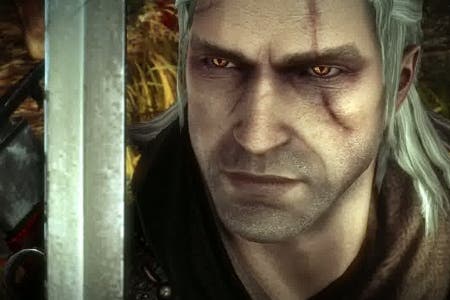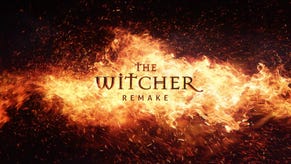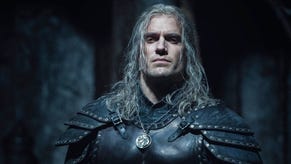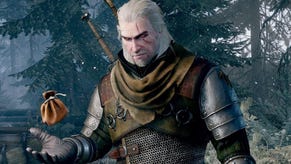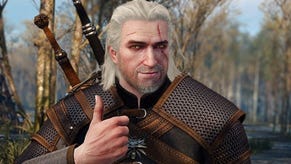Tech Analysis: The Witcher 2
Bewitching.
When the original Witcher launched back in 2007, the game received plenty of positive reviews, but the utilisation of BioWare's Aurora technology disappointed many. Developer CD Projekt RED's response? A state-of-the-art engine that powered one of the most technically accomplished, outright beautiful releases ever seen on PC: The Witcher 2: Assassin of Kings, released in May last year.
Many believed that a worthwhile console conversion of this game would be impossible, but it's somehow fitting that the RED Engine's debut on Xbox 360 is in many ways even more astonishing than it was on PC. While there are some understandable downgrades, the overall look is extremely close - the insane level of detail in both surroundings and characters, the immense sense of scale in the richly defined, beautifully animated environments, the vast array of post-processing effects and atmospheric rendering techniques - in every way that matters, the 360 game delivers.
Perhaps most impressive of all is how The Witcher 2 handles light and shadow: everything is dynamically rendered in real-time and a multitude of light sources can be in play at any given point, with the game also supporting a full day/night time cycle in the appropriate environments. Nothing appears to be pre-rendered or "baked" into the levels as is often the case in console titles; there are no shortcuts here - a philosophy that extends to all areas of the game's technological make-up.
Best of all, The Witcher 2 on Xbox 360 is no straightforward port. CD Projekt RED has taken a good hard look at the game itself and improved it across the board. This "Enhanced Edition" is in many ways a complete re-appraisal of the game, packed with meaningful upgrades encompassing gameplay, graphics, content and technology.
So let's begin by taking a look at a head-to-head video, backed as ever by a 720p comparison gallery. Bear in mind though that this is a comparison with a difference - we're not only facing off the new Xbox 360 version of the game against the original PC release, we're also seeing the visual improvements brought about by the new Enhanced Edition - and they are legion. Two head-to-heads in one then, and one of the most eye-opening comparison videos we've produced in quite some time.
We used our standard PC test rig here - an i7 set-up overclocked to 3.33GHz and working in combination with an NVIDIA GeForce GTX 680. All settings in-game were set to the maximum with the exception of texture downsampling and CD Projekt RED's overkill selectable, ubersampling, which hits performance hard even on top-end systems.
"Multi-platform development usually sees console-level textures running at a higher resolution on PC - not so with the Witcher 2 which boasts assets clearly designed to be rendered at top-end display modes."
As you might expect, from a nuts-and-bolts technical perspective, there are some easy wins for the PC: for a start, texture quality and filtering is generally in another league altogether compared to the Xbox 360 game. This is not exactly unexpected. Special cases aside, the standard for multi-platform development these days tends to be a case of targeting artwork for console 720p and then simply offering the option of higher resolution rendering on PC. Not so with The Witcher 2, where the developers are clearly providing superior assets aimed at looking great at 1680x1050 and beyond.
Indeed, there's so much detail in the textures here when running at 720p that there's sometimes a shimmering pixel-crawl effect - a by-product perhaps of the lack of multi-sample anti-aliasing and too much detail being crammed into what is, by PC terms, a fairly meagre level of resolution (if you have the GPU resources to spare, here's where the Ubersampling option comes into its own).
PC also scores easy wins in terms of shadow quality and the number of them being rendered dynamically. Effects work doesn't just benefit from higher-precision buffers, but also from physically higher resolution: performance-sapping alpha effects such as smoke, fog and particles are clearly running at a lower res on the Xbox 360, with intersecting geometry often showing some noticeable jaggies.
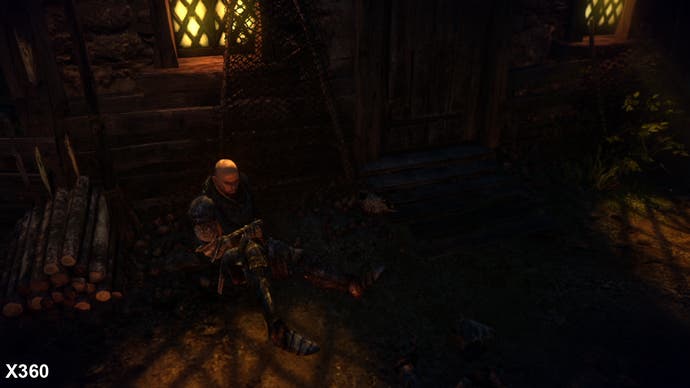
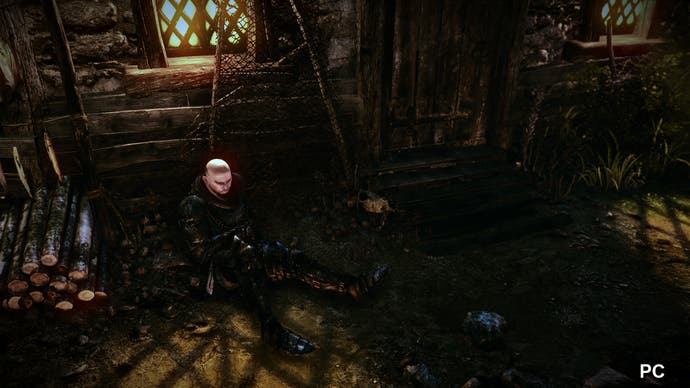
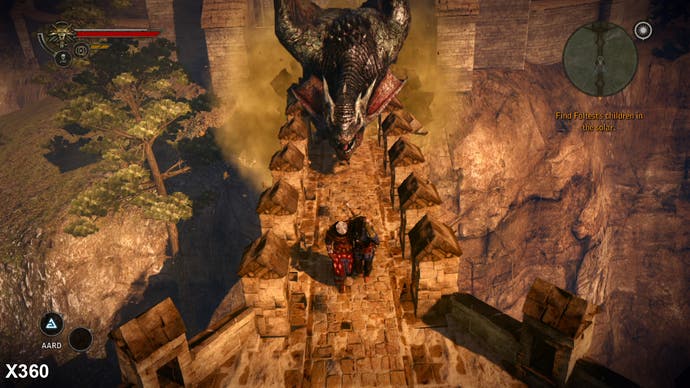
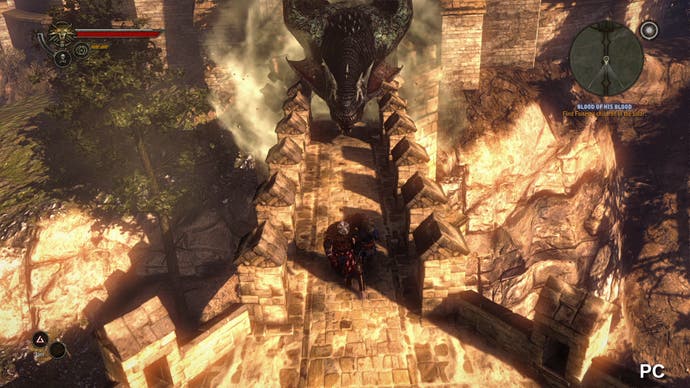
In other areas we also see a generally higher quality of presentation on the PC game: both versions employ post-process anti-aliasing, and the effect is patently cleaner on the original release - the Xbox 360 game looks to be utilising console-quality FXAA or something very similar. Texture and geometry pop-in and draw distance also show clear advantages on PC, as you would expect.
None of this should diminish the scale of the achievement though. The Witcher 2 on Xbox 360 possesses a combination of artistic and technological accomplishment we're accustomed to seeing in AAA games from the best developers in the business, backed by mammoth budgets. The reality is that CD Projekt RED hasn't converted the game to run comfortably on 360 - it has actually managed to improve it. The Enhanced Edition does many things: it incorporates all of the DLC released thus far seamlessly into the narrative, spoiling us with a nice new intro and adding new locations and characters that account for around four hours of gameplay. Crucially, it also sees the original PC gamepad support revised into a much more natural, intuitive and easy-to-use interface.
However, what doesn't seem to have featured too heavily in the coverage of the Enhanced Edition is that the look of the game has been significantly transformed compared to its PC debut. As you can see from the comparison, the changes to the lighting in particular stand out. CD Projekt RED appears to have become much more adept and confident in the usage of its HDR rendering, and the result is that the majority of the game has a very different ambience: more realistic and natural, and less like a high-precision CG movie.
"This Enhanced Edition is far more than a Game of the Year-style content compilation - it's a complete reassessment of the original game in terms of graphics, gameplay, content and technology."
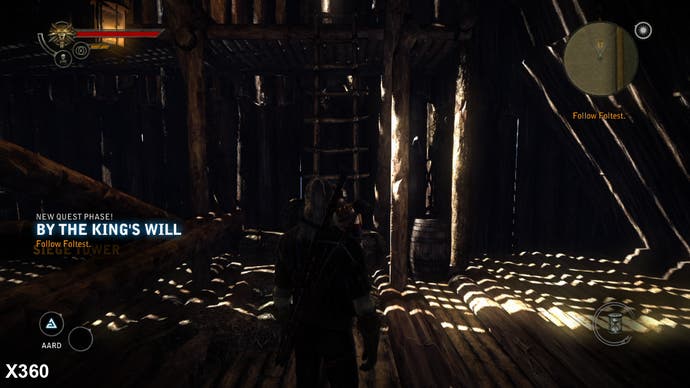
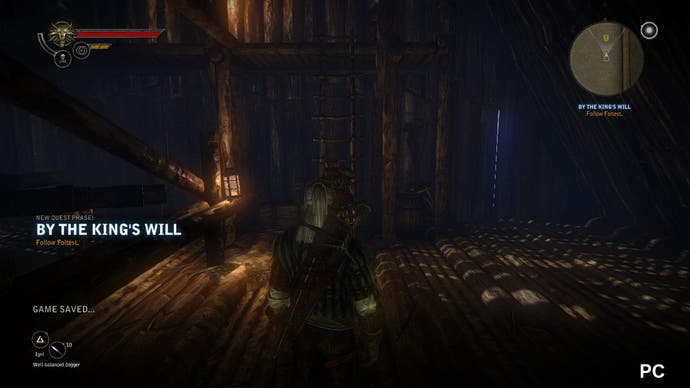
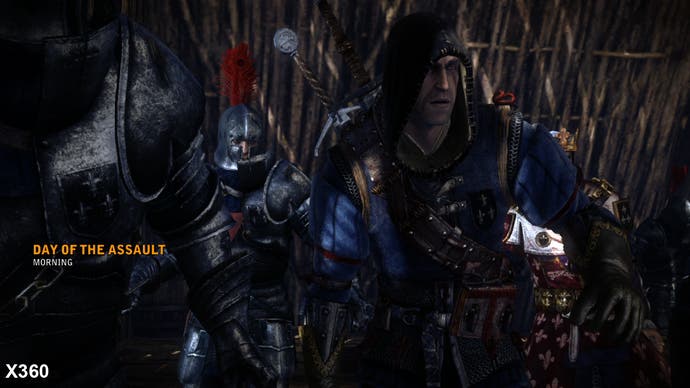
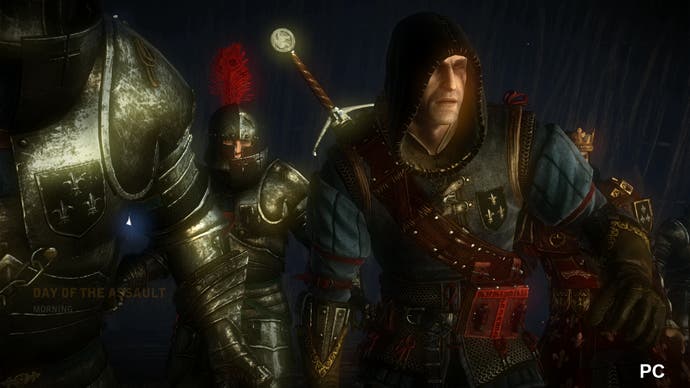
Weather conditions have been altered seemingly on a mission-by-mission basis, and there appear to have been a multitude of tweaks to atmospheric effects. There's a definite sense that the developers have more readily embraced the organic nature of the core visuals and produced a revised lighting scheme to match. The result is simply beautiful.
Also interesting is that the developer has re-evaluated how to light its characters - in the original edition, there was definitely a sense that Geralt and company were somewhat unnaturally illuminated in order to make them pop out of darker surroundings; the difference now is that they appear to sit much more comfortably within the environments, with the addition - where necessary - of appropriately placed light sources. The enhancements don't stop there either: in places, both levels and characters have benefitted from tweaks and outright revisions to the core artwork, again lending them a more natural look.
In putting together this article, we were chasing CD Projekt RED for a PC version of the Enhanced Edition (Namco having already provided the Xbox 360 version) to produce a closer, more exact like-for-like comparison. We're actually rather happy the developer couldn't get the revised version to us to meet the deadline for this article - it's given us a greater appreciation of the work the firm has done in taking an already great game and making it even better. It's all the more remarkable in that the Xbox 360 version took just 11 months of work to complete, albeit employing the talents of around 100 staff members.
"The Xbox 360 version of The Witcher 2 took 11 months to complete, with over 100 staff involved - an remarkable achievement bearing in mind the scale of the task and the improvements made."

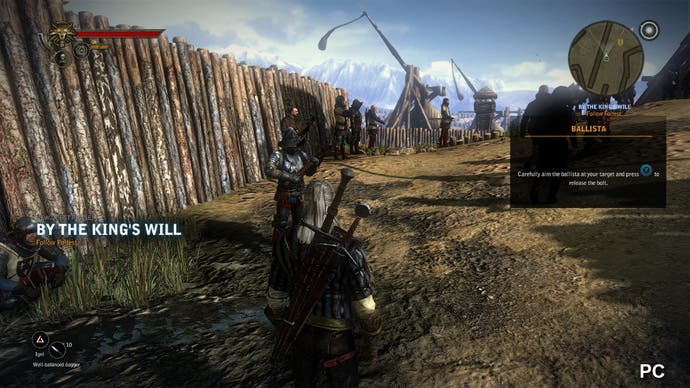


Of course, this isn't the first time that we've seen cutting-edge PC technology successfully re-factored onto console. Crytek got there first with Crysis 2 and while most of the visual impact made its way across to the Xbox 360 and PS3, frame-rates were variable to say the least - a situation we saw repeated when the original Crysis was ported over months later. Lavish effects work in combination with a tough workout for physics and AI code could see performance drop significantly, and while the games are undeniably great, there's still the sense that they don't feel quite "at home" running on older, console hardware. Could we see a similar problem with The Witcher 2?
To give the engine a bit of a stress test, we decided to create two different performance analysis videos. In the first, we look at combat in the game. This can - and will - kick off in almost any environment, so we chose gameplay excerpts with exceptionally intricate scenery, masses of enemies - or both. We end the video with a look at the first mammoth boss, so if you'd rather not watch that, quit the video around 5:50 mark.
In terms of performance, the developer has gone for the usual console standard here - frame-rate is capped at 30 frames per second, and when rendering exceeds the available 33.33ms budget, v-sync is dropped and the framebuffer is flipped as soon as it's ready rather than waiting for the next screen refresh, thus producing screen-tear. In short, it's the same "soft v-sync" we see in titles such as Battlefield 3, Alan Wake and almost all games using the Unreal Engine 3 technology - amongst many others.
"Recreating a high-end PC experience on Xbox 360 is an astonishing achievement - but The Witcher 2 has the performance to match the visual accomplishment."
It's the right decision for this game. Even when the 30FPS update isn't sustained, control still feels precise and responsive and in truth, it's rare that you actually notice the tearing on-screen - most likely because of the muted colour schemes and the lack of fast motion. More commonality between one frame and the next serves to make the tearing more difficult to pick up by the human eye, and the impression you get during gameplay is more along the lines of a barely perceptible "wobble" at worst, as opposed to any eye-rending artifacting.
In terms of actual frame-rates, it's rare for The Witcher 2 to dip below 28FPS - quite an outstanding achievement bearing in mind the richness of the visuals, the varying numbers of NPCs roaming around the environments and the multitude of effects in play at any given point.
Our second performance analysis centres on the cut-scenes - a key element in any modern adventure game and something you're going to be spending a lot of time watching in The Witcher 2. Aside from a couple of FMV sequences, all of the cinematics are entirely engine-driven, producing a pleasing consistency between storytelling and gameplay. However, they do introduce assets and rendering techniques we don't see during the general run of play including higher polygon models for the characters, and a shifting, high quality depth of field, which appears to have been toned down significantly in the Enhanced Edition for a much more pleasing effect (360 vs. PC).
However, the utilisation of these "extras" does impact the engine performance somewhat - we see more screen-tear and more dropped frames, especially evident in scenes where lots of transparencies are in play.
"Even when the 30FPS update isn't sustained, control still feels precise and responsive and in truth, it's rare that you actually notice the tearing on-screen"
The good news is that while we sometimes see a markedly lower frame-rate, the tearing remains very difficult to pick up on, mostly for the same reasons as before. However, on top of that, the very nature of the "talking head" cinematic is that there isn't much in the way of camera movement, and as the characters aren't generally carrying out any dramatic movements, again the actual location of any tearing mostly goes undetected by the human eye, as the analysis video demonstrates rather well.
In summary then, it's clear that The Witcher 2 has the performance to match the spectacle. This may well be a PC conversion, but the level of technical accomplishment we see here is more in line with what we'd expect from a top-tier first-party studio designing a game directly for the strengths of the host console hardware.
Compare and contrast with a comparable technology - such as Anvil, the Assassin's Creed engine, which has gradually evolved across four games thus far. On its first attempt, CD Projekt RED has bested it in virtually every way, from characters to environment detail to lighting to effects work - and it runs more smoothly to boot. Combine what is a landmark technological achievement with an intriguing story, enormous amounts of depth and a fun combat system and we have the complete package, well worth its Eurogamer 9/10 review score.
The icing on the cake is that all of the changes that have been made to The Witcher 2 in its console development phase have been rolled back into the original PC version, with an 11GB patch set to be rolled out next week when the Enhanced Edition launches on console. In an age where publishers are happy to charge for online passes, on-disc DLC, in-game currency, Avatar items and dashboard themes, CD Projekt RED buys into Valve's simple philosophy which recognises that gamers are drawn to value - remarkably, the Polish developer is giving away this extensive update for free to owners of the PC version.
It's a move that will not only generate immense levels of goodwill from its existing customers but will doubtless encourage more people to buy the full game - and based on how good the 360 release looks, the PC Enhanced Edition should be something truly special.
Update: We've now updated our PC build of The Witcher 2 and note that many of the 360 enhancements - specifically pad support, lighting and visuals - appear to be unchanged based on an initial playthrough of the Prologue. We've approached CD Projekt RED for comment.
